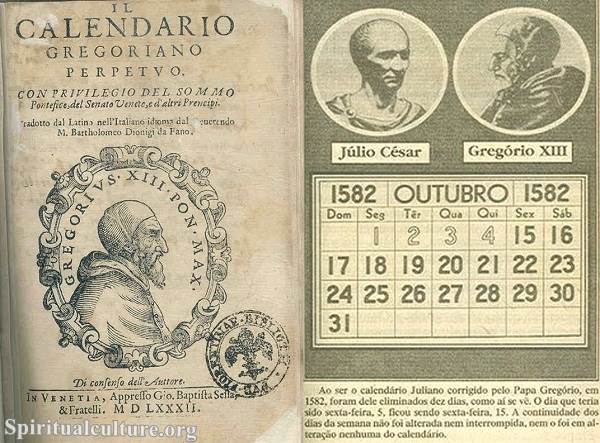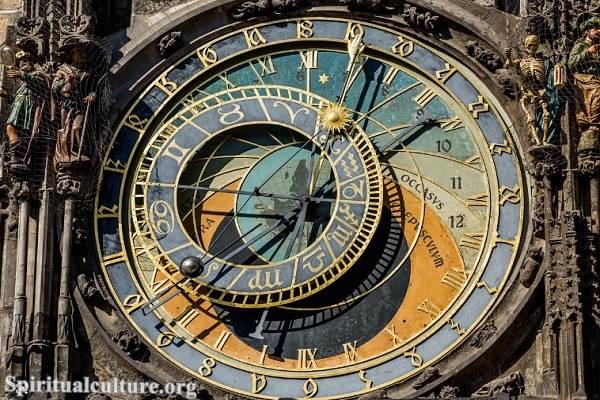While overshadowed by the Gregorian Calendar in most parts of the world today, the Julian Calendar continues to be relevant in various fields, including scientific research, historical analysis, and cultural observances.
In this article, Spiritual Culture delves into numerous aspects of the Julian calendar and offers an in-depth exploration of the Julian calendar converter—its functionalities, significance, and applications.
Understanding Julian Dates
History of the Julian Calendar
The Julian Calendar was a groundbreaking reform of the Roman calendar, which had become misaligned due to its lunar cycle. Before Caesar’s reforms, the Roman calendar was based on a complex system that included intercalary months and leap years, leading to inconsistencies and confusion. Julius Caesar, with the assistance of the astronomer Sosigenes of Alexandria, implemented a simple yet effective system. The Julian Calendar comprised 365 days in a year, divided into twelve months, with an additional leap day added every four years to account for the extra 0.25 days per solar year.
Key Features of the Julian Calendar
- Structure: The Julian year consists of 365 days, segmented into 12 months of varying lengths:
- January (31 days)
- February (28 days, 29 in leap years)
- March (31 days)
- April (30 days)
- May (31 days)
- June (30 days)
- July (31 days)
- August (31 days)
- September (30 days)
- October (31 days)
- November (30 days)
- December (31 days)
- Leap Year Rule: Every four years, an extra day is added to February, making it 29 days long. This method simplified the calendar and offered a more stable system compared to its predecessors.
- Date of Introduction: The Julian Calendar was officially implemented in January 45 BC and represented a major step forward in timekeeping that lasted for over 1600 years.
This system, however, was not without issues. It miscalculated the length of the solar year by approximately 11 minutes. Over the centuries, this slight error accumulated, resulting in a drift that caused the calendar to lose synchronization with the astronomical seasons.
By the end of the 16th century, the Julian Calendar was about 10 days behind the solar calendar. This discrepancy prompted further reforms, culminating in the introduction of the Gregorian Calendar by Pope Gregory XIII in 1582. The Gregorian reform adjusted the leap year rules to eliminate three leap years every 400 years, creating a more precise alignment with the solar year.
Significance of Julian Dates in Astronomy
In the realm of astronomy, timekeeping methods are critical for accurately recording celestial events and phenomena. Julian dates are used extensively in various branches of science due to their simplicity and efficiency.
Uniformity in Measuring Time
Julian dates facilitate linear time calculations as they express days as a continuous count rather than relying on monthly structures. This is especially useful for astronomers who deal with long periods—tracking the visibility of stars, planetary motions, and other astronomical events requires precision.
Julian Day Number (JDN)
The Julian Day Number (JDN) system counts days starting from a fixed epoch. The epoch of the Julian Day starts at noon on January 1, 4713 BC (Julian calendar). Using this system, astronomers can refer to any date by its corresponding JDN, thus avoiding confusion caused by variable month lengths.
For instance, the Julian Day Number system allows astronomers to calculate intervals between events easily. If a celestial event occurs at JDN 2459600 and another event occurs at JDN 2459650, astronomers can immediately ascertain that 50 days elapsed between these two events.
Conversion Methods
With the continued use of both the Julian and Gregorian calendars, understanding how to convert between the two systems becomes critically important. Methods for conversion vary, and this section details practical approaches for both converting Gregorian dates to Julian and vice versa.
Gregorian to Julian Date Conversion
The conversion process from the Gregorian calendar to the Julian calendar can initially seem daunting due to the intricacies involved. However, there are systematic approaches that can facilitate this:
Step-by-Step Conversion
- Identify Basic Parameters: Begin by identifying the Gregorian date you wish to convert. For instance, let’s take September 15, 2024.
- Apply the Basic Formula: For dates after October 15, 1582, the general rule is to subtract 13 days from the Gregorian date to find the Julian equivalent.
- Example Conversion:
- Gregorian date: September 15, 2024
- Julian conversion: September 15, 2024 – 13 days = September 2, 2024
- Example Conversion:
- Confirm Leap Years: Consider whether the given year is a leap year. For example, both Julian and Gregorian calendars treat leap years differently, and not accounting for this can lead to errors in conversion.
Leap Year Considerations
Leap years must be handled carefully during conversions:
– All years divisible by 4 are leap years in the Julian system.
– In the Gregorian system, the rules are more complex, as centuries are only leap years if divisible by 400.
In practical conversion, if the initial Gregorian date falls between January 1 and February 28 in a leap year, an adjustment is necessary to account for the leap day.
Julian to Gregorian Date Conversion
The process of converting from Julian to Gregorian follows a structure similar to the reverse conversion.
Step-by-Step Conversion
- Identify the Julian Date: Let’s say we want to convert the date September 2, 2024 (Julian).
- Apply the Basic Formula: Add 13 days to the Julian date for dates post-October 15, 1582.
- Example Conversion:
- Julian date: September 2, 2024
- Gregorian conversion: September 2, 2024 + 13 days = September 15, 2024
- Example Conversion:
- Double-Check for Accuracy: As with the Gregorian to Julian conversion, confirm whether the resulting year is a leap year and adjust accordingly if necessary.
Using Online Julian Date Converters
In the modern era, numerous online resources and tools can simplify the conversion process significantly. These tools handle the inherent complexities of date conversions, allowing users to convert Julian and Gregorian dates effortlessly.
Features of Online Converters
- User-Friendly Interface: Most online Julian date converters offer an easy-to-use interface where users can input their dates.
- Instant Results: After entering the date, users receive immediate converted results, minimizing the risk of manual errors.
- Support for Multiple Calendar Formats: Some converters can support a range of calendar formats, including Julian, Gregorian, Islamic, and Hebrew calendars.
Some reputable online converters include:
- Time and Date Julian Date Converter: A reliable tool that assists in converting dates and includes historical context.
- Julian Date Converter by Calendar-12.com: Offers a straightforward interface with options for both conversions.
- AstroSeek Julian Date Calculator: Useful for conversions specifically tied to astronomical events and dates.
With these tools, both professional researchers and casual users can perform conversions efficiently with increased accuracy.
Julian Date Formats
The representation of Julian dates can vary, and there are several formats to consider. Understanding these formats is crucial for both practical usage and academic applications.
Standard Julian Date Format
The most common format for Julian dates is the Julian Day Number (JDN), which uses a continuous count of days since the Julian epoch.
Characteristics of JDN
- Continuous Count: Each day is assigned a unique number, allowing for direct comparisons between dates.
- Absence of Ambiguity: The absence of months and years avoids confusion associated with calendar month transitions.
For example, the JDN for specific historical events, such as the signing of the Declaration of Independence, can provide precise timings for researchers.
Modified Julian Date Explained
Modified Julian Date (MJD) is an adaptation of the Julian Day Number and is primarily utilized in scientific contexts, particularly in astronomy.
Characteristics and Benefits of MJD
- Reference Date: The MJD begins at midnight on November 17, 1858, providing a more manageable range of numbers for modern scientific applications.
- Calculation: To convert a Julian Day Number to Modified Julian Date, you can subtract 2,400,000.5 from the JDN.
- Example:
- If JDN = 2459580, MJD = 2459580 – 2400000.5 = 59580.
- Example:
- Ease of Use: The smaller range of numbers makes MJD easier to work with in computations and record-keeping for scientific research.
Application of Julian Dates
The Julian Calendar and its dates find application in meteorology, navigation, agriculture, and a variety of scientific research fields. Their continuous nature allows researchers and specialists to work with time periods without the frustration posed by conventional monthly calendars.
Uses in Scientific Research
Julian dates provide a consistent measure of time, particularly in long-term observational studies. Below are several fields in which Julian dates are particularly beneficial.
Astronomy
Astronomy is perhaps the most significant area in which Julian dates are extensively used. Researchers rely on Julian dates to calculate and observe the timing of astrological events accurately. Projects such as the monitoring of comet appearances and celestial alignments employ JDN to ensure precision.
Meteorology
Meteorologists use Julian dates in climate data analysis. For example, tracking temperature or precipitation over several years can be simplified using Julian dates for easier analysis of long-term patterns.
Geology
In geology, researchers often analyze sediment layers and core samples where time is primarily measured in days or years. The use of Julian dates allows for uniformity while dating significant geological events.
Importance in Historical Contexts
While the Julian Calendar has lost its primary function in daily life, it plays a fundamental role in historical research and documentation.
Historical Record Keeping
Historical documents, literature, and events are often dated using the Julian Calendar. Understanding and interpreting these references requires an appropriate grasp of Julian dates. Historians must convert these dates when analyzing timelines to provide an accurate representation of historical events.
Integration in Chronological Studies
When studying chronology, researchers often need to consider the Julian Calendar. Events that happened in different calendars need careful conversion to appropriately align timelines for historical narratives.
Frequently Asked Questions
Many individuals have questions concerning the intricacies of the Julian calendar and its relation to modern timekeeping.
What is the Current Julian Date?
To determine the current Julian date, you can employ online converters or check current Julian date tables. For instance, as of September 15, 2024, the Julian date is 2460212.
How to Read Julian Dates?
Reading Julian dates involves understanding that they represent a continuous day count. Each Julian date, like JDN 2459600, indicates a unique value. In general terms, the higher the number, the further in time from the epoch the date is.
Differences Between Julian and Gregorian Calendars
A major difference lies in how each determines leap years. The Julian Calendar employs a simple rule of adding an extra day every four years, whereas the Gregorian Calendar has a more complex rule with specific exceptions for centuries.
Additionally, over the centuries, the Gregorian Calendar has remained more aligned with the seasons, which is crucial for agriculture and seasonal activities around the world.
Tools and Resources
Modern technology has enabled the development of an array of tools and resources designed to facilitate Julian date conversions. Below are some of the most effective options.
Recommended Julian Date Converter Tools
- Time and Date Julian Date Converter: This tool allows users to convert between Julian and Gregorian dates with ease. It also provides historical calendars and celebratory contexts.
- Julian Date Converter by Calendar-12.com: User-friendly and offering a straightforward design, this converter helps users shift between Julian and Gregorian effortlessly.
- AstroSeek Julian Date Calculator: Known for its relevance to astrological calculations, this resource offers extensive conversions related to celestial events, providing detailed insights.
How to Perform Manual Conversions
For those who prefer to perform conversions manually, here’s a brief overview of the steps:
- Identify the date you wish to convert.
- For a Gregorian to Julian conversion after October 1582, subtract 13 days and account for leap years.
- For Julian to Gregorian, add 13 days for dates after October 1582.
- Double-check for leap year adjustments, especially for dates around February.
Familiarizing yourself with these calculations could provide further insight into the workings of both calendar systems.
Special Considerations
When working with Julian dates, certain considerations will come into play, particularly regarding leap years and time zones.
Leap Year Calculations in the Julian Calendar
The Julian Calendar adopts a straightforward leap year rule contrast to the Gregorian calendar. Every year divisible by 4 is considered a leap year, leading to 2,800 Julian years having 700 leap years, with a total of 2,100 regular years. Over time, this simple rule caused the calendar to drift with respect to the solar year.
Time Zone Adjustments for Julian Dates
While Julian dates themselves do not inherently vary based on time zones, adjusting for time can be critical, especially when converting an event’s local time into a Julian form. To maintain accuracy, it’s important to note the time zone of the given Julian date, particularly if an event’s timing is country-specific or if it crosses into different time zones.
Community and Cultural Uses of Julian Calendar
Even today, the Julian Calendar has not been entirely forsaken. Various communities and cultural contexts still value its significance.
Adoption by Orthodox Churches
Many Eastern Orthodox churches continue to follow the Julian Calendar for the determination of religious observances, including Easter and Christmas. Consequently, these churches maintain their traditional calendars in contrast to the Gregorian system, fostering a sense of historical continuity and cultural heritage.
Cultural Significance of Julian Dates
In addition to religious observance, Julian dates have cultural implications in various communities. They reflect a connection to the past and maintain cultural practices that reinforce community identity.
Regions that traditionally used the Julian Calendar often incorporate it into their festivals, rituals, and historical celebrations, ensuring the legacy of this calendar system is retained.
In conclusion, the Julian calendar and its converter provide a crucial understanding of how humanity measures and interprets time. From scientific applications to cultural relevance, the Julian Calendar bears witness to our historical trajectory and ongoing evolution in timekeeping practices. Through this in-depth exploration, we uncover the lasting significance of the Julian calendar in bridging historical contexts, contemporary practices, and scientific inquiry. Embracing the knowledge about the Julian calendar enriches our appreciation for the complex relationship between time, culture, and history— a testament to our enduring quest for precision in measuring one of humanity’s most precious resources—time.





